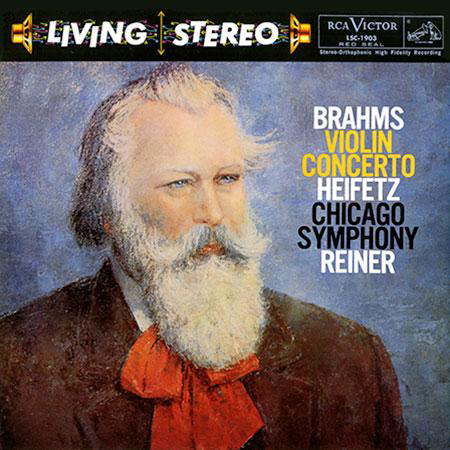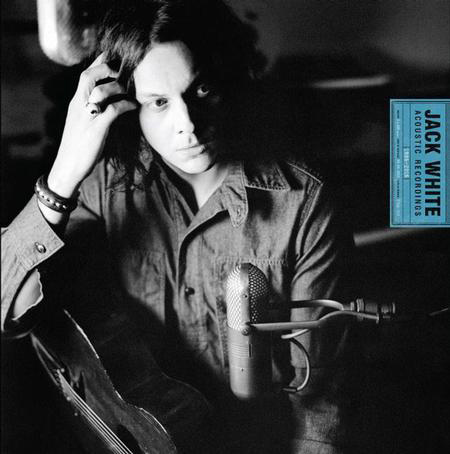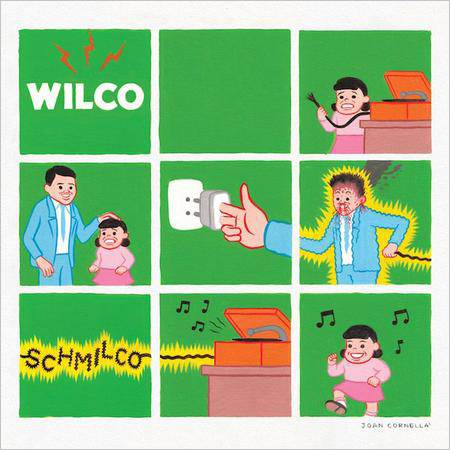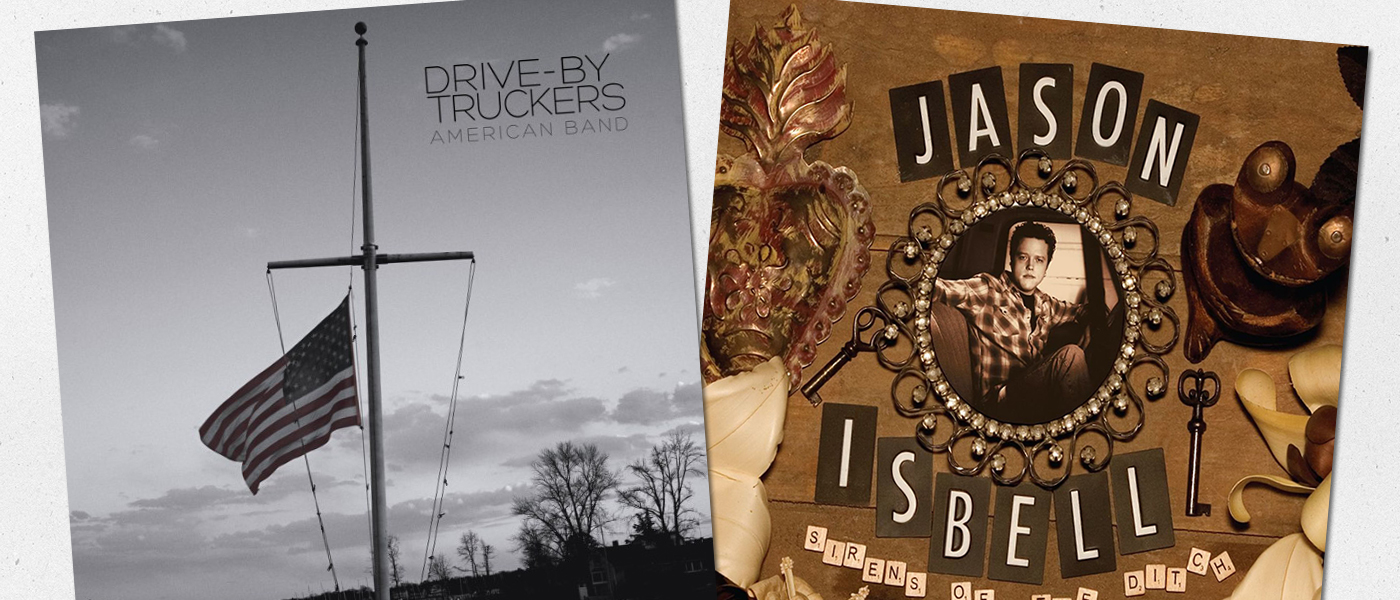
On July 14, 2015, Nick Cave’s 15-year old son tried acid for the first time, became disoriented and was separated from his friend, then fell 60 feet to his death from a cliff. Skeleton Tree was already mostly finished by then, but Cave went back into the studio to amend lyrics and performances about two weeks after his son’s passing. I don’t know how Cave would have held it together long enough to sing these tunes in a studio so soon after enduring such an extreme tragedy. Sometimes, it doesn’t sound like he’s holding anything together at all. He wails and moans, and at times sounds like he’s crying through gnashed teeth. Album opener “Jesus Alone” begins with the line “you fell from the sky / crash landed in a field” before exploring images of flowers springing from the ground and lambs bursting from their mothers’ wombs. “You believe in God / but you get no special dispensation / for this belief, now.” I came to Cave’s work late, but he’s explored religious imagery in each of the four records in my collection previous to Skeleton Tree. The death of his son (who was a twin) seems to have uncovered a well for Cave to explore that feels bottomless and black. We’re feeling our way through these compositions. When Cave sings “with my voice / I am calling you,” this listener feels the failure of words in times of great tragedy. I don’t imagine that the call is being received. The music is equally sparse and blunt, incorporating drum loops, electronic sounds, a violin, and ethereal vocal harmonies. Cave released a documentary about the making of Skeleton Tree which was shown in movie theaters as a one-night event in lieu of doing any press for the release. So, he quite literally has no words for us on this subject. It’s all in the work.
Unlike Cave’s other albums in my collection, Skeleton Tree comes with no lyric sheet. At times, it feels as much like a spoken word piece as a musical endeavor, and so the listener is almost forced into a reckoning with the messages and the event itself. Repeated listens may result in a softening of the fears that were initially conjured up, but the scars don’t fade. This is high art from a place of purity, if not light. I commend Nick Cave for working through it, and for having the bravery to invite us along. I just wish he hadn’t had to.

Nick Cave’s latest sat on my shelf and terrorized me for about a month because I was scared to listen to it. Analogue Productions’ take on the old’ Brahms Violin Concerto sat on my shelf and terrorized me for about three months because… I’m intimidated by writing about Classical music. I’m more than happy to tell you whether or not I like a composition and its performance, but I struggle to articulate why. I’m almost always game for listening to Brahms, mostly because he seems to have been a badass, but also because his work holds sentimental value for me. Here we go…
One of my two closest friends from my hometown knows all about this kinda thing. He’s been a fan of Brahms for as long as I’ve known him, and we met in nineteen hundred and eighty-four. When he was twelve. But he’d been into Brahms for greater than twelve years when I made his acquaintance. It seems that his pregnant mother carried him to a recital in New Orleans, and he only kicked and carried on during the Brahms portion of the programming. So it goes. Anyway, he turned me onto the composer’s work when I was nine, and now here we are.
This piece is broken up into three movements and was the only violin concerto that Brahms ever composed. Seems that he was a pianist. And I’d imagine that playing this piece on a piano would be way more manageable than it would be on a violin. There are lots of hard stops and fast action which causes the violin to sound suspiciously like an electric guitar at times. I do know that there are emotions expressed in this performance that feel as vibrant and real as any on the Nick Cave record. Minus the abject sadness. To my ears, this music sounds comparatively light, certainly in comparison to some of the more ostentatious fare that accompanies bombing scenes in war movies and the like. This is the Classical album that I’ve been looking for since I started collecting some of the Living Stereo titles that AP has been doing for a bit now. This is the one I can put on and recede into cloudy visions and diaphanous light schemes. I love the other titles so far too, and they won’t go neglected because of their newest cousin on the shelf, but Brahms’ peaks aren’t too jagged and his valleys not too morose. There’s a lovely balance to the work, and the performances are outright virtuosic. Themes are suggested by an oboe prior to being consumed and amended by a violin. The symphony, of course, is fun for the more cinematic passages and the big endings, but I like it best when the percussionists and the bell ringers lay back and let Jascha Heifetz out of his cage. He seemed to be able to find his way around the fret board just fine, thanks. Hear for yourself if you don’t believe me or think me ill informed. I can’t recommend this one enough.
This title comes closer to the “in the room” experience that I’ve been looking for from the Living Stereo titles. This is an accomplishment because I don’t think they were originally recorded to produce such an effect. As I understand it, the room was mic’d simply on both sides with one or, at most two, mics added for center fill and detail. We’re not talking about Rudy Van Gelder-like techniques for grabbing nuance and detail here. And yet, it’s all there. Maybe not the closeness, but for sure the richness. My advice would be to grab a copy and hear for yourself. I bet you’ll be glad you did. In richness and in health…

Does Mobile Fidelity follow up their Super Audio CD (or whatever they’re called) releases with vinyl versions of the same titles? I can’t tell. I’m thinking that not all of the CDs find their way onto wax, but I’m too addled to design and follow through on a long-term observational study to find out. Who can we ask? Anyway, a while back, MoFi started releasing digital versions of some Hall and Oates titles. (Is there a Hall and Oates cover band called “Haulin’ Oats?” If not, why?) One of those titles was History of Rock and Soul Part 1 which was a greatest hits compilation from 1984. (There never was a Part 2.) I’ve had an original in fine condition for well over a decade now, and I’ve damn near worn it out. I love that record, and I’d surrendered any hope that MoFi was going to put it out on vinyl. Then, they did. And it beats an original in fine condition, I can tell you that much right now.
If you’re looking at this article sideways and wondering how an avowed hater of most things ‘80s could be so smitten with a greatest hits record by one of that decade’s biggest bands, then I think you’ve missed something important. These guys had their act together, man. Yeah, there are some embarrassing videos from their heyday, same as there are for any working artist of that era. And the production is glossier than I’d prefer, absolutely. But the material is what gives the whole thing legs. That and the performances. These boys had a backing band that could rival any of Dylan’s best (they’ve shared at least one member that I can think of), and they could flat out sing. And write songs. They put their spin on the Philadelphia soul sound, and turned it into more units sold by any duo in the history of popular music. Yep. Haulin’ Oats did all that. “You Make My Dreams Come True” really might make your dreams come true if you enjoy that little piano breakdown during the bridge as much as I do. “Sara Smile.” “Rich Girl.” I mean, what do you want? How about “She’s Gone?” They’re all on side one and they’ve never sounded better. The cleanliness of the recordings actually lends itself pretty well to the MoFi aesthetic. Same with their Elvis Costello records. They take those stifled recordings and breathe the Good Life right into them. It’s alchemy. And it’s essential, in my opinion.
These guys have quietly undergone a bit of a revival in recent years. At least one of them has a show (maybe online?) that involves taped sessions of them collaborating with other artists. I think Hall does that. There’s suddenly a mile long line of folks waiting to work with Oates too, including, but not limited to, Yim Yames from My Morning Jacket. They sell out medium sized to larger venues, and they command a considerable fee to get in. I call that success.
The greatest hits record is pressed on a single silent disc, and presented in a gatefold, heavy outer sleeve – just like you’d expect. MoFi did not recreate the calendar from 1984 that came with the original. That would have been fun, but not as fun as listening to the most sparkling version of “Private Eyes” that you’ve ever heard. Act now.

After a blizzard of activity around his last studio release, Lazaretto, Big Jack White put the word out: no work for a while. We wouldn’t be hearing from the axe man on record (at least as a solo performer) or seeing him onstage. I didn’t buy it. Maybe I should have because time’s starting to bear him out. Thankfully, he threw us a bone by releasing his Acoustic Recordings from 1998 to 2016. By now, we should anticipate wrinkles in the plan. This is not your grandma’s version of acoustic music. Or Pete Seeger’s, may he rest in peace. There’s good rocking involved. More importantly, Big Jack understands that the “roll” part is what gives it all legs. And teeth. This record has legs and nasty, sharp, pointy teeth. It’s brilliant.
I wasn’t immediately drawn to this release. Really, I bought it to support the artist as much as I bought it to hear. But it drew me in after a couple of listens, and I’ve got both feet fully onboard by now. The 26 (!) songs are presented in chronological order. I thought it might be more fun to sequence the two records based on flow, not time. Turns out, it flows just fine, thanks. Based on the set list, you might be inclined to assume that the grooves are crammed to max capacity, but some quick math shows that most sides hover right around the 16 minute mark that is recommended for optimum sound. Maybe a little over. Big Jack has never aimed for the audiophile crowd, really. I suspect he thinks we’re a bunch of whiny dweebs. Hopefully, someone takes the sonic bull by the horns and presents his catalog in a proper light one day. Until then, hope you get a decent copy. I did this time. There is no dreaded encircled “U” in the dead wax on either disc, but I noticed that the download card contained within had United branding on it. So this may have been pressed at the new Third Man facility in Detroit, but I’m guessing he’d have made an announcement about that. I find it more likely that this was pressed in Nashville. If so, they did okay. My discs aren’t as silent as I prefer, but they don’t carry the sound of a train wreck in every groove like ghosts of United pressings past.
Anyway, there are revelations to be found herein. For me, some of these songs got lost in the bombast of the surrounding material on the original releases. For instance, “You’ve Got Her In Your Pocket” is my current fave selection on Acoustic Recordings, but I’ve had it in my collection for as long as I’ve owned the White Stripes’ Elephant. Problem there is, it’s followed by “Ball and Biscuit” and “The Hardest Button To Button.” So I’d heard it, but I hadn’t really received it yet. Hearing these quieter songs huddled up together gave me a better appreciation for Big Jack as songwriter rather than gunslinger. He included a previously unreleased Stripes tune from the Get Behind Me Satan days as well as some quieter mixes of some Raconteurs material. There’s a lot in here to explore, even for the superfan. All songs remastered for this release. Download code and full-sized booklet included. Soft touch cover too.
If you’re a fan, get it. If you’re on the fence, I encourage you to take a chance on it. Surprises, as always, await.

Wilco took the better part of five years off between The Whole Love and last year’s Star Wars. I didn’t really notice as I changed jobs twice, did 170 hours of volunteer work and took nine pre-requisite courses for a grad school program that I wanted to get into, got into the grad school program, and started it – during that time. So, Star Wars felt like a gift when it was surprise released about a year ago. It was a gift, in fact, as the download was free from the band’s website. Unfortunately, the vinyl version was not, but it wasn’t insanely priced. Neither is Schmilco. And Schmilco has the added advantage of being the finest sounding Rock ’n Roll record I’ve heard in some time.
It was recorded around the same time that Star Wars was, but the two records are as distinctly different from each other as Wilco’s catalog is distinctly diverse. Schmilco is already a legendarily quiet entry into the band’s considerable library of recorded works. And, as they say, still waters run deep. There’s a lot on Jeff Tweedy’s mind, again. Check out “Normal American Kids” if you need proof. It’s hard to imagine that guy getting much rest, really. I caught two nights of Wilco’s five night residency at the Fillmore (the real Fillmore) a couple of weeks ago, and the new material really shined. Schmilco’s colors bled onto the other songs’ palettes too. The electronic freak-outs that litter songs like “Misunderstood” (from Being There) were presented as acoustic freak-outs made with recognizable instruments. Like banjos. The band played a lot of material from A Ghost Is Born too, which leads me to believe that Tweedy might feel that the two records share some manner of sonic and/or thematic kinship. (I would not go into Schmilco expecting to hear something similar to Ghost, if I were you though. I think the new one has more in common with Sky Blue Sky, personally. And it doesn’t sound much like Sky Blue Sky, so…) Schmilco sounds like it was recorded quietly and closely with Tweedy actually whispering his melodies on songs like “We Aren’t The World (Safety Girl).” I have sensory issues that normally cause me to do some freaking out of my own when I hear someone whisper on tape, or on film, or directly into my ear, but this is a different kind of whisper. One that allows for notes more so than breaths. Doesn’t bother me in the least. Tweedy described “Happiness” as “a dirge” at the Fillmore, and he was concerned that he’d lose the audience for having played it, but he didn’t. I love that song. It’s quiet and slow, and the farthest thing from boring there is. My current favorite Schmilco tune is “Locator” which sounds like it could have made it onto Star Wars, but I love having it on Schmilco as it creates a more dynamic sonic landscape than it would have on the last record. The Fillmore stage was dressed up to look like a forest scene, and that fit the new material quite well too. Schmilco sounds like it was made out of wood. Rich mahogany, perhaps. It’s a real record, gang. Made the old fashioned way. By musicians playing instruments, and recording on tape. There’s a noticeable lack of compression, and a decided emphasis on transparency. The disc was pressed at RTI. If you like Wilco or NPR, you need the vinyl version of Schmilco on your shelf. Hear me now, and believe me later. You’re welcome.



